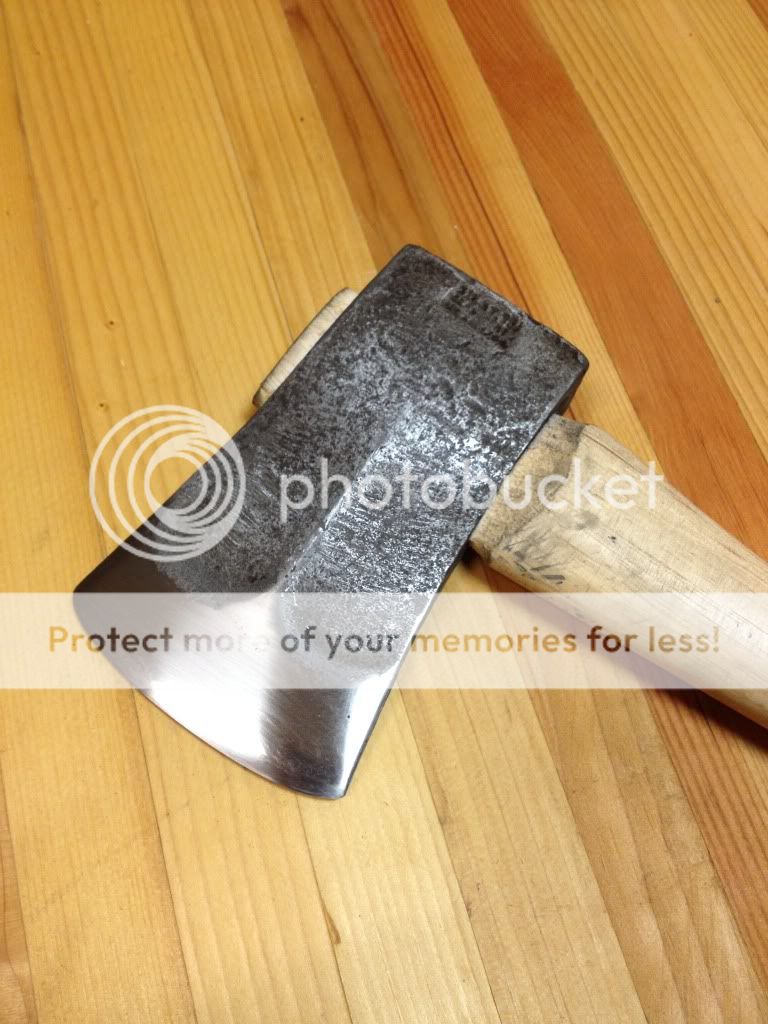Square_peg
Gold Member
- Joined
- Feb 1, 2012
- Messages
- 13,853
The wider ridge in those vintage axes will release easier than a sharper diamond-based ridge. Think of how eye ridges stop a handle from moving inside the eye.
The BladeForums.com 2024 Traditional Knife is available! Price is $250 ea (shipped within CONUS).
Order here: https://www.bladeforums.com/help/2024-traditional/
The wider ridge in those vintage axes will release easier than a sharper diamond-based ridge. Think of how eye ridges stop a handle from moving inside the eye.
For the record, the new rendition by 42 with glassport bevels and ears and beardless, as phantomknives pointed out and hardened poll looks nice in profile. If you moved the bevels back to the temperline it would solve the sharpening issue. And allow for deep bevels to save weight.

That style is called the Ideal Ridge, brought out by American Axe & Tool. It looked like this.

The wider ridge in those vintage axes will release easier than a sharper diamond-based ridge. Think of how eye ridges stop a handle from moving inside the eye.
That style is called the Ideal Ridge, brought out by American Axe & Tool. It looked like this.








Slip fit eye, but shown on a wedge-fit handle.

Note: the front of the handle's neck should be positioned just a smidgen forward for correct placement, but it's just a rough mockup. The shape of the knob and other fine details would need a little tweaking to get just right.
Now what you are describing is a flat bladed ax with a ridge. As has been hashed out with you repeatedly by several people 42, a flat cheeked axe is an inferior design for bucking and felling. The addition of a small ridge to a flat blade is not the answer. I feel like you are just backpedaling anyway. The ability to clear a chip, (as in the axe geometry, not just flailing with a blade on wood and going lookit!) Depends on the cheek.
What these axes have in common with the successful American Felling axe patterns is obvious. I think if we were to design a full size axe ignoring those common features would be foolish.

I have looked at those more than once. Just never pulled the trigger.I like the idea of getting a racing axe. Maybe we should be thinking of that. But like I said before - cheaper to buy what's already available. Right now you can buy a new Arvika racing pattern axe for $130 Canadian.
http://bigbeartools.com/store/?_esc...rvika-Five-Star-Racing-Axe-Pattern/p/28337916
That's a racing axe cheaper than many sissy woodcrafting axes.



